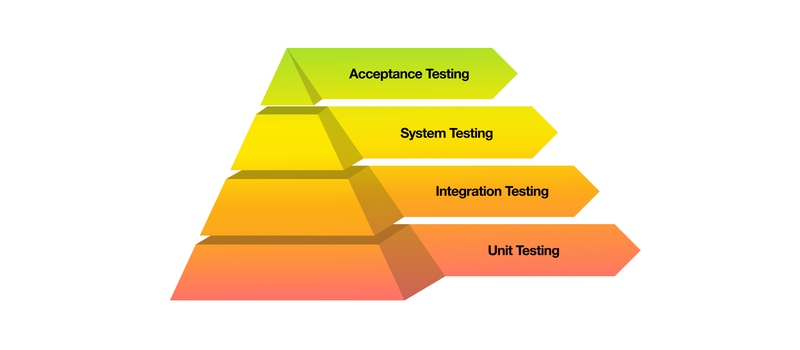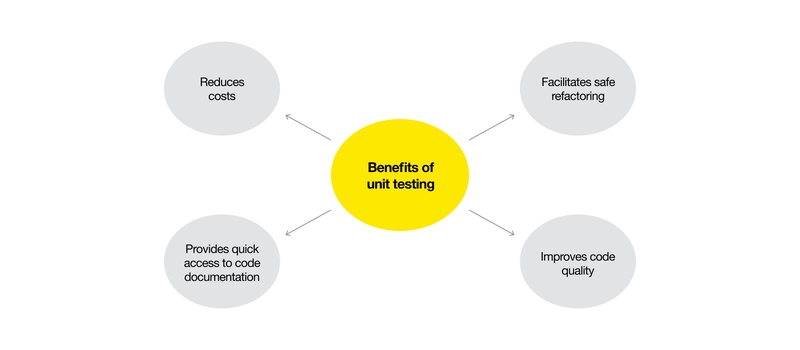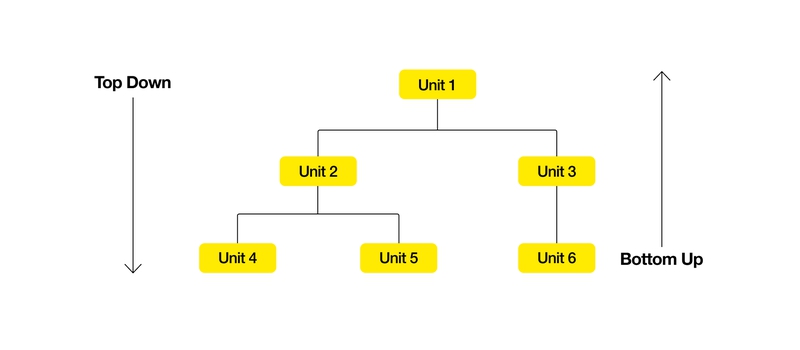Software Testing checks the behavior of your application during the development process and prevents the occurrence of critical errors, saving your budget.
According to Software Testing News, if you find errors during the development of your system, you may pay only $25 for a bug. However, the cost of fixing these bugs after launching the software can be up to $16,000. How to properly conduct testing and avoid additional expenses?
Essential steps of Software Testing
Software Testing is carried out throughout the entire product development lifecycle. This procedure helps to make sure that the product will be able to function successfully in the market.
Before the release, any software product passes 4 main orders of testing that allow the development team to ensure the correct operation of the system:
- Unit Testing;
- Integration Testing;
- System Testing;
- Acceptance Testing.

The purpose of all these levels of software testing is to make the software testing process more systematic and easily identify all possible app errors. How can these four levels improve your system?
Unit Testing
Unit testing is the first level of testing. At this stage, developers test individual units of the system to make sure that they are usable.
A unit is the smallest software component that usually performs a single cohesive function. Depending on the development technique, it may be represented by a separate function, a software process, a class, or a method.

At first glance, unit testing may seem like a long process since developers discover many defects and constantly make changes in the code. However, this approach gradually makes the code more robust and allows you to find errors at the early stages of software development, saving your time and money.
Integration Testing
During the Integration Testing, QA Engineers combine individual units and test them together as a group. The main purpose of this software testing level is to find bugs in the interaction of system units.

Kinds of Integration Testing
- Top-down Integration Testing
In this method, QA Engineers perform testing from the highest-level units to the lower-level ones, following the control flow or architectural structure. If some units are not ready, specialists use stubs that act as their temporary replacement. - Bottom-up Integration Testing
The bottom-up integration technique assumes that the tester first checks the lowest-level units and then moves us to the higher-level units. This approach is useful if all or almost all units of the level are ready.
Each of these approaches has its advantages and disadvantages. However, the choice of Integration Testing type depends on various factors, such as the cost of the application, its complexity, etc.
System Testing
System Testing is the phase where a tester checks a complete and fully integrated system as a whole. At this stage, QA Engineers integrate all units to verify whether the developed product works properly and meets the specified requirements.
By the way, System Testing is a Black Box type of testing. It means that testers study the software without knowing the internal code structure, implementation details, and internal paths.
In this case, quality specialists rely on the specification and check the system for compliance with predefined requirements.
Acceptance Testing
Acceptance Testing is the last level of software testing that is carried out before the product goes live. Testers conduct this type of testing to help the customer evaluate the obtained result and check whether the system meets the acceptance criteria.
Acceptance criteria include conditions that allow you to determine when your User Story is completed and has all the functions necessary to meet user needs.

Kinds of Acceptance Testing
- Alpha Testing
Alpha testing is performed by QA Engineers or developers to study the designed software from the client’s point of view.At this stage, testers use both White Box and Black Box Testing Methods. It means that software testing engineers not only test the inputs and outputs but also see the system code. - Beta Testing
After Alpha Testing is completed, you can start Beta Testing to improve the quality of the product.The main difference between Beta Testing and Alpha Testing is that Beta Tests are conducted by a group of actual users: using Black Box Testing, your target audience evaluates the result of the development team’s work and helps them find possible bugs.
Alpha and Beta Testing are characterized by different processes, strategies, and goals. However, despite these differences, these two types of acceptance testing help to strengthen confidence in the launch of the system and thereby achieve the success of the product in the market.
Beyond these fundamental levels of testing in software engineering, our exploration extends to five additional facets of software testing, each addressing specific dimensions of product quality. From evaluating performance and fortifying security to ensuring stability through regression testing, enhancing user experience via usability testing, and streamlining the testing process with automation – each plays a pivotal role in shaping a robust, market-ready software product.
Let’s navigate through these layers of testing intricacies to comprehend how a well-rounded testing approach can elevate the development process and pave the way for successful product launches.
Performance Testing
Performance testing is a critical aspect of software development, focusing on evaluating how well a system performs under various conditions. This includes assessing response times, scalability, and overall efficiency.
By conducting performance testing, developers can identify and address potential bottlenecks and ensure that the software meets the expected performance standards.
Security Testing
Security testing is a vital step in the software testing process, aimed at identifying and rectifying potential security vulnerabilities within the system. This includes assessing the software’s resistance to unauthorized access, data breaches, and other security threats.
In an era where cyber threats are prevalent, integrating robust security testing measures is essential for safeguarding sensitive information and maintaining user trust.
Regression Testing
As software evolves with updates and new features, regression testing becomes crucial. This level of testing ensures that the latest modifications do not negatively impact existing functionalities.
By systematically testing the entire system after each update, developers can catch any unintended side effects and maintain the stability of the software throughout its lifecycle.
Usability Testing
Usability testing focuses on assessing the user-friendliness and overall user experience of the software. This involves gathering feedback from potential users to evaluate the interface, navigation, and overall usability of the application.
Usability testing helps identify areas for improvement, ensuring that the software meets user expectations and provides a positive and intuitive user experience.
Automated Testing
Automated testing involves the use of specialized tools and scripts to execute test cases, making the testing process more efficient and less time-consuming. This section explores the benefits of automated testing, including faster test execution, repeatability, and the ability to test complex scenarios.
Integrating automated testing into the testing strategy can significantly reduce manual effort, allowing developers to focus on more complex and creative aspects of software development.
Benefits of Software Testing
During the development process, software products undergo four levels of testing: Unit Testing, Integration Testing, System Testing, and Acceptance Testing. Each of these stages is important and checks the parts of the project with the corresponding complexity.
A gradual increase in the number of code components in the test helps to easily detect system errors at an early stage and avoid failure of a software product.
Exposit provides high-quality software testing services using modern approaches and methodologies. We have strong skills in different types of testing and can help you with the full cycle of testing activities. Contact us if you value usability, performance, and functionality and want to deliver only stable products to the market.






